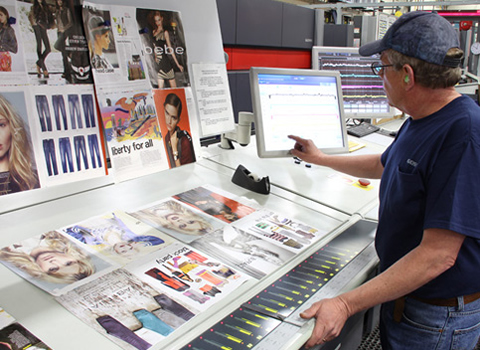PR campaign planning in 2017
Campaign planning has changed somewhat (completely) in the last 5 years. It used to potentially link with an above the line campaign, be that TV, billboards or global initiatives for the brand, and mostly focused on print editorial. The ways this could be secured were vast and inspired creativity – “think of the headline” was a phrase that was banded round press offices. You were aware that every PR in the country was after the same square inches of space in the pages of the titles that were perfect for your placement, and that everyone wanted to be best friends with the editors.
Now, in 2017, things are different. Although campaign planning is still, probably even more creative, you don’t have to be a PR professional to know that the way in which you get your news in front of your (mostly millennial) audience, is to get it on their phone. Digital media, is now a redundant phrase as although newspapers and magazines exist; pretty much everything is digital. Even the last few print media have online platforms, at the very least twitter and Instagram in which most of their viewers are looking at on their phones. And fundamentally, we now engage directly.
Here are our top tips to campaign planning in 2017:
- Have a plan for social media, make sure every element of your campaign has hashtags, when you send out products include notes with the hashtags on. Put them on your press releases and in your emails. They are trackable and they work. People who are testing your products want to promote their work too, and using a hashtag allows them to do this.
- Use bloggers and vloggers, make sure you have close relationships with your key influencers in this market. Ask them questions, which of their friends in their networks might also like to post on your issue or test your product. Run things by them. Have a close circle who will always be your go to with new products and treat them nicely.
- Connect with the rest of the world. We are not an Island, we are actually, but in terms of global communications we are definitely not. Ask your clients what is going on in other parts of the world, “how did the Japan launch go?” What can we use from that? What works well in one country doesn’t necessarily work for you but….it might, and it is all about learning.
- Reflect your audience back on them, talk their language and be where they are looking – we are no longer in an age of fitting in with the editorial schedule – create your own and if you make enough noise you can make it the journalist’s agenda too.
- Be nice to all your contacts. In the age of screengrabbing, secret facebook groups and wattsapp chats it is more important than ever to maintain yours and your clients integrity. As digital media is an essential part of SEO the domain holders have a lot of power, we need to at least make sure they are on our side. This goes for crisis too, a crisis manual is all well and good, but twitter moves at such a speed it is almost impossible to keep up. Alert key influencers you trust and allow them to intercept negative conversations with their media peers on social media.
- Finally, remember, although new age media (lolz) seems to be moving at a rate, remember that it is all about the message, keep everything tightly linked with your campaign plan. Every platform is just that, a platform, and although engagement is the key – the phrase “this too shall pass” is very true, just look at the end of vine earlier this month, it was not very long ago when marketing managers were willing to invest a lot of money on the short lived platform, and it’s now gone, just like more will emerge and go. You have to roll with the punches.









Comments are closed.